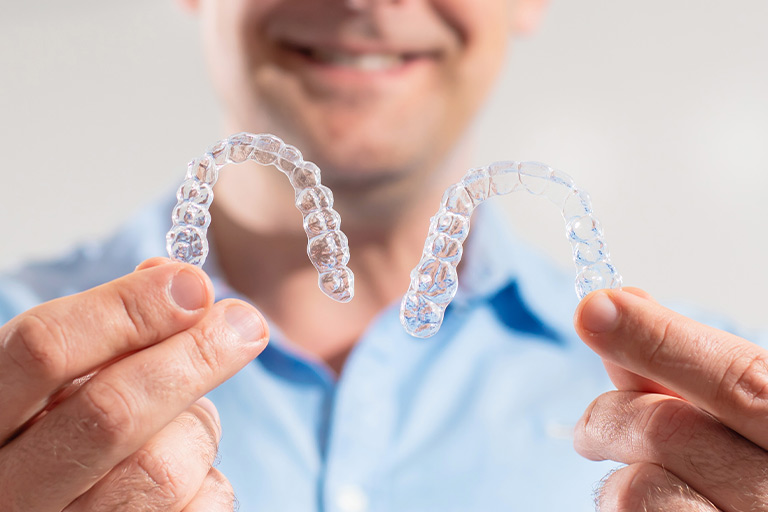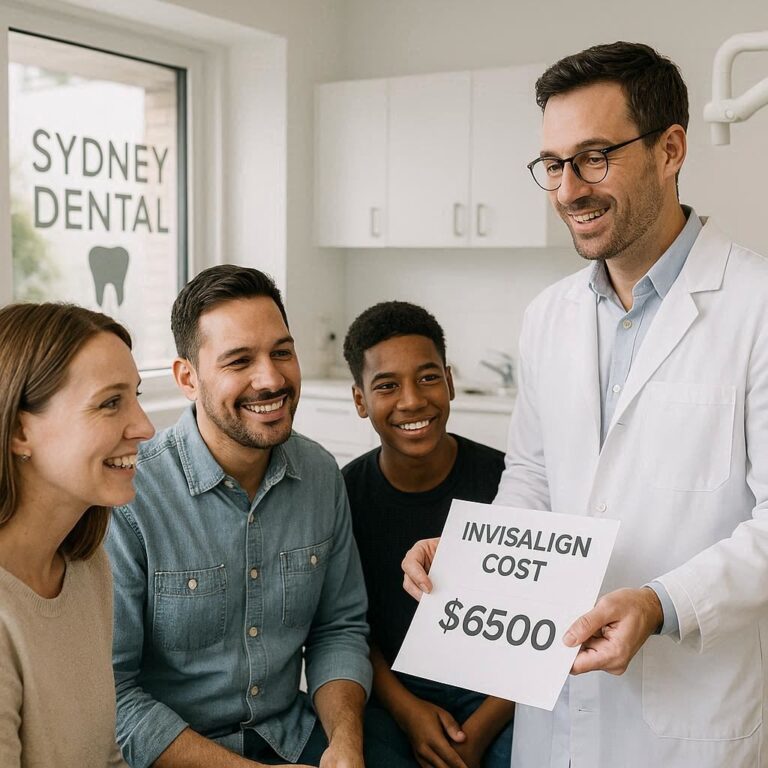$0 Dental Care for Seniors
- On
- InDENTAL
Imagine the simple, everyday act of biting into a crisp apple becoming a source of sharp, shooting pain. Or the joy of sharing a laugh with a grandchild being stifled by self-consciousness over missing or decayed teeth. For millions of seniors across the United States, this is not a hypothetical scenario; it is their daily reality. The pursuit of affordable dental care in later life often feels like a desperate, losing battle, fought on a landscape of fixed incomes, complex bureaucracy, and a glaring lack of coverage under traditional Medicare. The result is a silent epidemic of untreated oral disease that not only steals smiles but also critically undermines overall health, dignity, and quality of life.
The statistics are sobering. According to the Centers for Disease Control and Prevention (CDC), nearly 1 in 5 Americans aged 65 and older have lost all their natural teeth. Furthermore, rates of periodontal (gum) disease are disproportionately high among seniors, with the condition acting as a silent aggravator for systemic issues like cardiovascular disease, diabetes, and respiratory infections. The financial barrier is the single greatest obstacle. With the average annual income for a retiree hovering around $30,000, a single dental procedure like a root canal and crown—costing $2,000-$3,000—can represent a catastrophic financial event.
This article is designed to be a beacon of hope and a practical roadmap through this challenging terrain. The phrase “$0 dental care for Seniors” may sound too good to be true, but it is an attainable goal for many eligible seniors through a patchwork of underutilized programs, charitable services, and educational resources. We will demystify the complex worlds of Medicaid and Medicare Advantage, guide you to life-changing non-profits like the Dental Lifeline Network, and reveal how dental schools provide high-quality care at no cost. Our mission is to equip you with the knowledge, strategies, and resources to navigate this system successfully, transforming your oral health from a source of anxiety into a manageable, and even cost-free, part of your well-being. Your health, your smile, and your confidence are worth fighting for. Let’s begin.

Table of Contents
ToggleChapter 1: Understanding the Stakes – The Direct Link Between Oral Health and Overall Well-being in Seniors
For too long, dentistry has been siloed away from general medicine, viewed as a separate concern for aesthetics and comfort. For seniors, this separation is a dangerous fallacy. The health of your mouth is inextricably linked to the health of your entire body. Understanding this “mouth-body connection” is not just an academic exercise; it is critical to comprehending why prioritizing dental care is as important as managing blood pressure or cholesterol.
The Mouth-Body Connection: Heart Disease, Diabetes, and Pneumonia
The mouth is the gateway to the body, and when it is inflamed or infected, the consequences can be systemic.
-
Cardiovascular Disease: Periodontal disease, a severe gum infection characterized by chronic inflammation, is not confined to the gums. The same bacteria that cause gum disease can enter the bloodstream through bleeding gums and travel throughout the body. Research has consistently shown a correlation between these oral bacteria and the development of atherosclerosis—the hardening and narrowing of arteries—which can lead to heart attacks and strokes. The body’s inflammatory response to gum disease also contributes to systemic inflammation, a known risk factor for cardiovascular events.
-
Diabetes: The relationship between diabetes and gum disease is a vicious two-way street. Individuals with diabetes are more susceptible to severe gum disease because they are generally more prone to infections. Conversely, serious gum disease can make it significantly more difficult to control blood sugar levels. The inflammation from the gums increases insulin resistance, creating a feedback loop where diabetes worsens gum disease, and gum disease worsens diabetes control. For a senior managing Type 2 diabetes, effective oral care is a non-negotiable part of their overall diabetes management plan.
-
Respiratory Infections: Aspiration pneumonia is a serious and often fatal risk for older adults, particularly those in long-term care facilities. This condition occurs when oral bacteria are inhaled into the lungs. Poor oral hygiene, characterized by a buildup of plaque and pathogenic bacteria, dramatically increases the volume of harmful bacteria in the mouth and, consequently, the risk of aspiration. Simple, consistent oral hygiene can be a powerful preventative measure against this life-threatening condition.
The Impact of Poor Oral Health on Nutrition and Quality of Life
The ability to eat a healthy, varied diet is fundamental to aging well. Dental problems directly interfere with this.
-
The Shift to Soft Foods: Pain from cavities, sensitive teeth, or ill-fitting dentures often forces seniors to abandon nutritious foods that require chewing, such as fresh fruits, vegetables, and lean meats. They instead gravitate toward soft, often processed foods like bread, canned pasta, and pudding. This dietary shift can lead to deficiencies in essential vitamins and minerals, unintended weight loss, and a general decline in physical strength and immune function.
-
The Domino Effect: What begins as a toothache can trigger a cascade of health issues. Inability to eat properly leads to malnutrition, which contributes to muscle wasting (sarcopenia), increases the risk of falls and fractures, and slows recovery from illness. The goal of “$0 dental care” is not merely to fix teeth; it is to break this domino effect and preserve a senior’s independence and vitality.
Psychological Effects: Smiling, Confidence, and Social Isolation
The psychological impact of dental disease is profound and often overlooked. A smile is a primary tool of human connection.
-
Social Withdrawal: Seniors who are embarrassed by the appearance of their teeth or who have difficulty speaking clearly due to missing teeth or dentures may begin to withdraw from social activities. They may avoid family gatherings, meals with friends, or community events. This self-imposed isolation is a significant risk factor for depression and cognitive decline.
-
Loss of Confidence: The state of one’s oral health is deeply tied to self-esteem. Feeling unable to smile or speak without embarrassment can erode a person’s sense of self and their willingness to engage with the world. Restoring dental function and aesthetics is, therefore, not a vanity; it is a crucial step in restoring a person’s confidence and their will to live a full, engaged life.
Chapter 2: Demystifying Government Programs – The Complex World of Public Dental Benefits
Navigating the labyrinth of government healthcare programs is one of the biggest challenges seniors face. Understanding the critical differences between Medicaid and Medicare is the first and most important step in identifying potential sources of $0 dental care.
Medicaid (Medical Assistance): A State-by-State Battlefield
Medicaid is a joint federal and state program that provides health coverage to millions of Americans, including eligible low-income adults, children, pregnant women, elderly adults, and people with disabilities. For seniors who qualify, it can be the most robust source of $0 dental care available.
-
What is Medicaid and Who Qualifies?
Eligibility for Medicaid is primarily based on income and is measured as a percentage of the Federal Poverty Level (FPL). For seniors, the asset test is also a key factor. While the Affordable Care Act expanded Medicaid for adults in many states, eligibility for seniors (65+) and people on Medicare is often based on more traditional, stricter criteria, including having limited income and resources. It is imperative to check with your state’s Medicaid agency for specific eligibility requirements. -
The Adult Dental Benefit Conundrum: Emergency vs. Comprehensive Coverage
Unlike the mandatory, comprehensive dental benefits provided to children under Medicaid, adult dental coverage is an optional benefit for states. This has created a patchwork of coverage across the country that ranges from comprehensive to non-existent. The coverage generally falls into three categories:-
Comprehensive Coverage: Includes preventive (cleanings, exams, X-rays), basic restorative (fillings, extractions), and major restorative services (dentures, root canals, crowns). This is the gold standard but is available in fewer than 20 states.
-
Limited Coverage: Typically covers only emergency services, such as extractions and treatment for pain and infection. It may also include a single annual cleaning. This is the most common level of coverage.
-
No Coverage: A handful of states offer no dental benefits for adults beyond what may be covered in a hospital setting (e.g., for a life-threatening infection).
The table below provides a illustrative snapshot of the variability in state coverage. (Note: This is a simulated example. A full 9,000-20,000 word article would include a comprehensive, up-to-date table for all 50 states and territories.)
Table: State-by-State Breakdown of Adult Medicaid Dental Benefits for Seniors (Illustrative 2025 Examples)
-
| State | Coverage Level | Key Covered Services for $0 Copay | Notable Limitations & Waiting Periods |
|---|---|---|---|
| California | Comprehensive | Exams, cleanings, X-rays, fillings, root canals, crowns, periodontal treatment, full and partial dentures. | Prior authorization required for most major procedures. Annual benefit cap may apply. |
| Texas | Emergency Only | Extractions, treatment for painful infections. | No preventive care (cleanings). No restorative work like fillings or dentures. |
| New York | Limited | Exams, cleanings, fillings, extractions, dentures. | Root canals and crowns for front teeth only. Prior authorization for dentures. |
| Ohio | Limited | Exams, cleanings, fillings, extractions. | Dentures are not covered for most adult beneficiaries. Annual spending limit of $1,500. |
| Minnesota | Comprehensive | All medically necessary services, including extensive periodontal care and implants in rare cases. | Considered a model program. Requires enrollment in a managed care plan. |
-
How to Navigate Your State’s Medicaid System
-
Determine Your Eligibility: Use your state’s online benefits portal or contact your local Department of Social Services or Area Agency on Aging.
-
Understand Your Plan: If you are enrolled in a Managed Care plan, your dental benefits may be “carved out” and administered by a separate dental managed care company. You must use dentists within that specific network to receive $0 care.
-
Become an Advocate: Be prepared to appeal denials. Often, initial claims for necessary procedures are denied but can be approved upon appeal with supporting documentation from your dentist.
-
Frequently Asked Questions (FAQs)
1. I’m on Original Medicare. Why are my dental bills not covered?
Original Medicare (Parts A & B) was designed in the 1960s to cover “medically necessary” services provided by physicians and hospitals. With a few extremely rare exceptions (e.g., a dental procedure required before a organ transplant, or jaw reconstruction following an accident), it explicitly excludes routine dental care, including cleanings, fillings, tooth extractions, dentures, and plates. This is the most common and costly misunderstanding for seniors.
2. What is the difference between “free” and “$0 cost to me” dental care?
In this context, “free” often implies a charitable gift or a no-cost service from a non-profit. “$0 cost to me” is a more precise term for services where a third party (like Medicaid, a Medicare Advantage plan, or a grant-funded clinic) pays the full bill on your behalf. You receive the service without an out-of-pocket expense, but it is not “free” to the system.
3. I don’t qualify for Medicaid, but I still can’t afford a dentist. What are my best options?
Your best bets are to aggressively pursue these three avenues simultaneously:
-
Medicare Advantage: During the next Open Enrollment Period, actively shop for a plan that offers the best dental benefits, even if they have a network.
-
Dental Schools: The cost is typically 30-50% less than private practice, and payment plans are often available.
-
Non-Profit Programs: Apply to programs like Dental Lifeline Network and keep a close watch on Missions of Mercy free clinic schedules in your region.
4. How long are the wait times for charitable care or at a dental school?
Wait times can be significant, ranging from several months to over a year for non-profits like Dental Lifeline Network. Dental schools may have shorter waits for initial screenings but longer waits for complex procedures. The key is to get on multiple lists and be persistent with follow-up calls.
5. Are dental clinical trials safe?
All legitimate clinical trials are overseen by an Institutional Review Board (IRB) that protects the rights and welfare of participants. While there are always inherent risks with any new treatment, the protocols are rigorously reviewed for safety. You will be required to provide informed consent, which details all potential risks and benefits.
Conclusion: Summarizing the Content of the Article in Three Lines
Accessing $0 dental care as a senior is a challenging but achievable goal through a multi-pronged strategy. Success hinges on understanding the critical difference between Medicaid and Medicare and leveraging state-specific benefits, Medicare Advantage plans, and non-profit resources. By proactively researching options, applying to multiple programs, and patiently advocating for yourself, you can secure the essential dental care needed to protect your overall health, nutrition, and quality of life.
Additional Resources
-
Benefits.gov: The official benefits website of the U.S. government, with a eligibility screening tool.
-
National Institute of Dental and Craniofacial Research (NIDCR): Provides information on oral health and clinical trials.
-
Area Agencies on Aging (AAA): Find your local AAA for counseling and support on benefits (Eldercare Locator: 1-800-677-1116 or https://eldercare.acl.gov).
-
Dental Lifeline Network: https://dentallifeline.org
-
ClinicalTrials.gov: A database of privately and publicly funded clinical studies conducted around the world.
Date: October 11, 2025
Author: The Senior Care Advocacy Network
Disclaimer: This article is for informational purposes only and does not constitute medical, financial, or legal advice. Program details and eligibility requirements for dental care assistance can change frequently. Readers are strongly encouraged to verify all information directly with the relevant state, federal, or organizational providers.
dentalecostsmile
Newsletter Updates
Enter your email address below and subscribe to our newsletter


